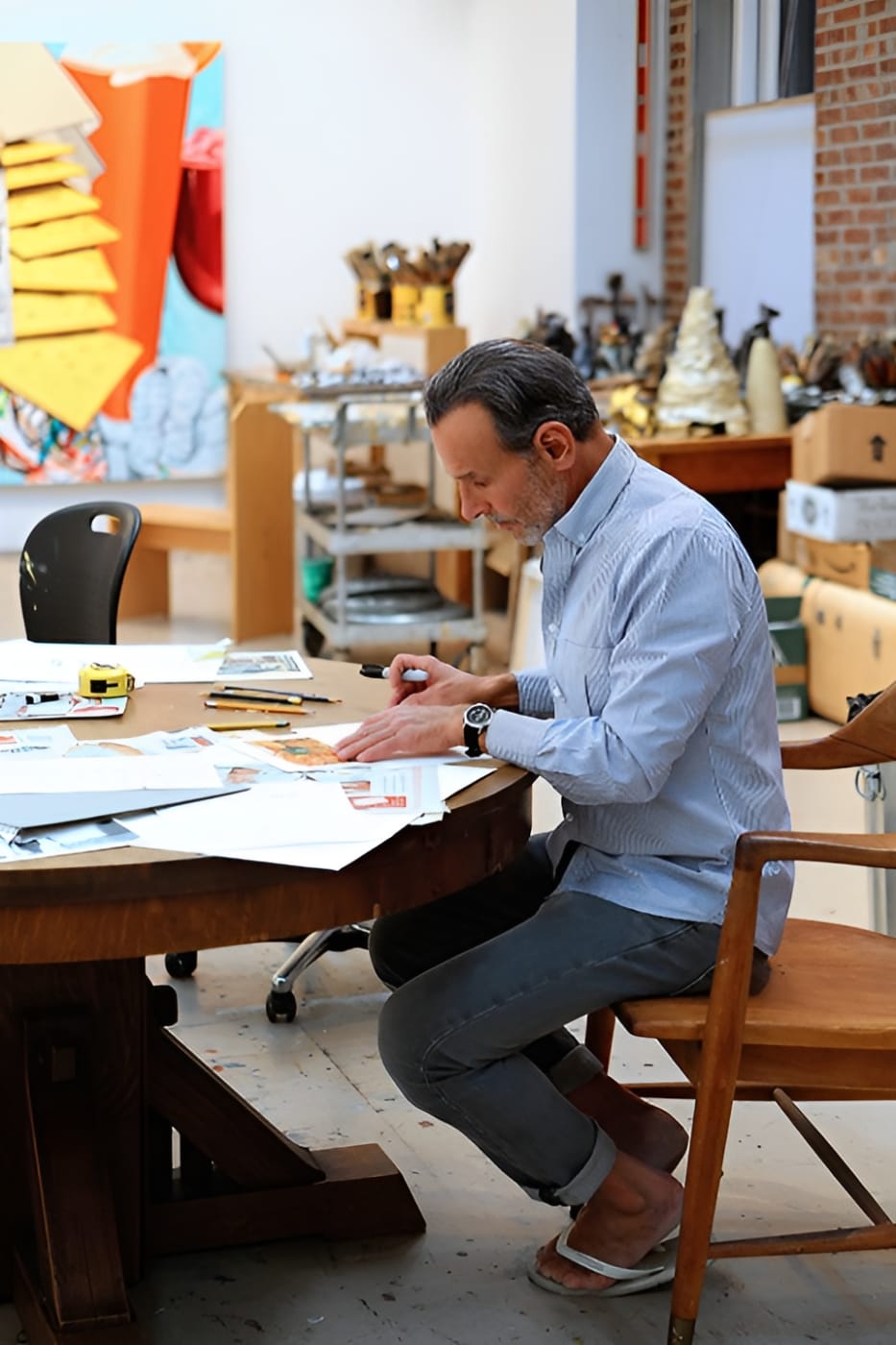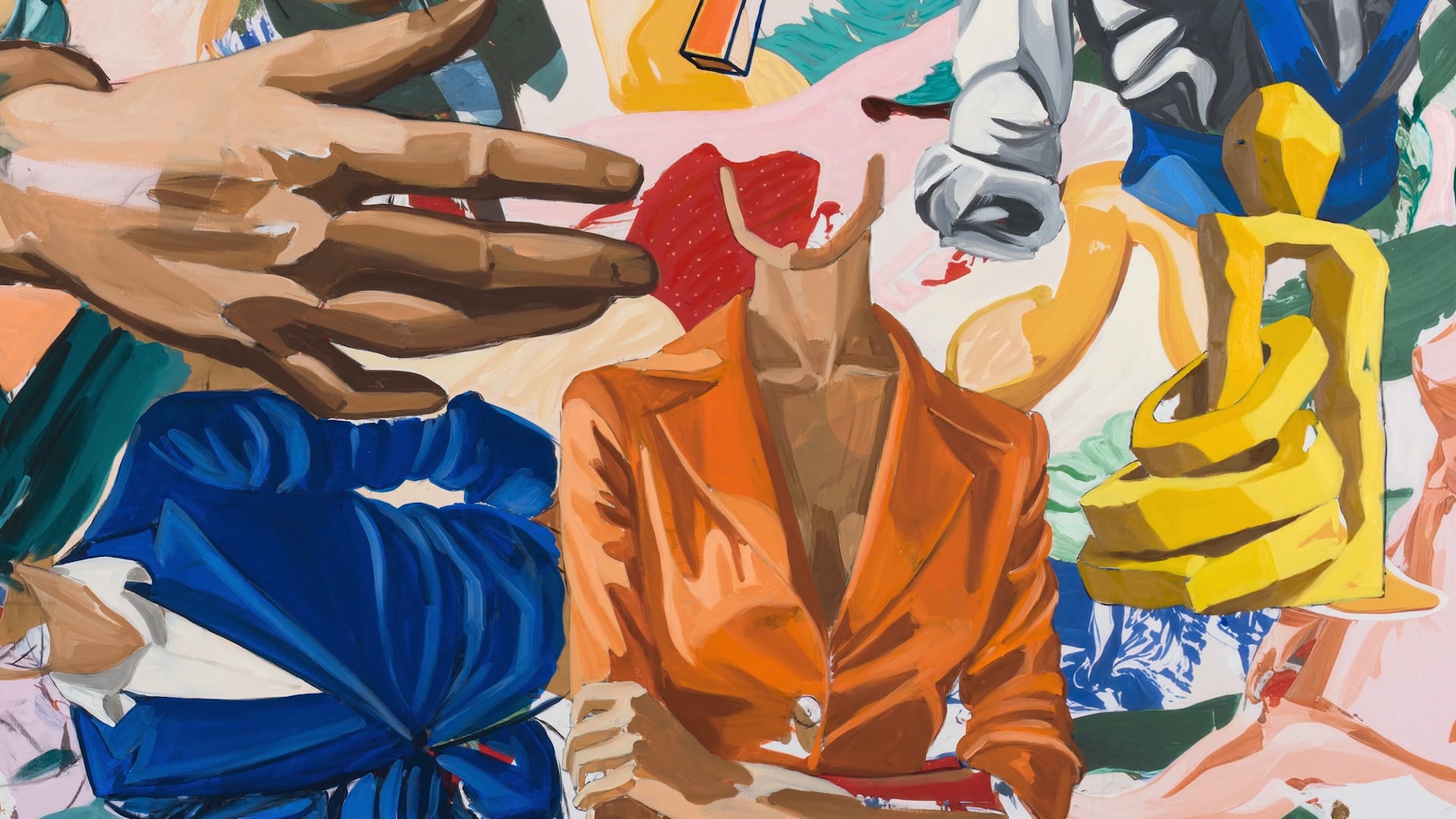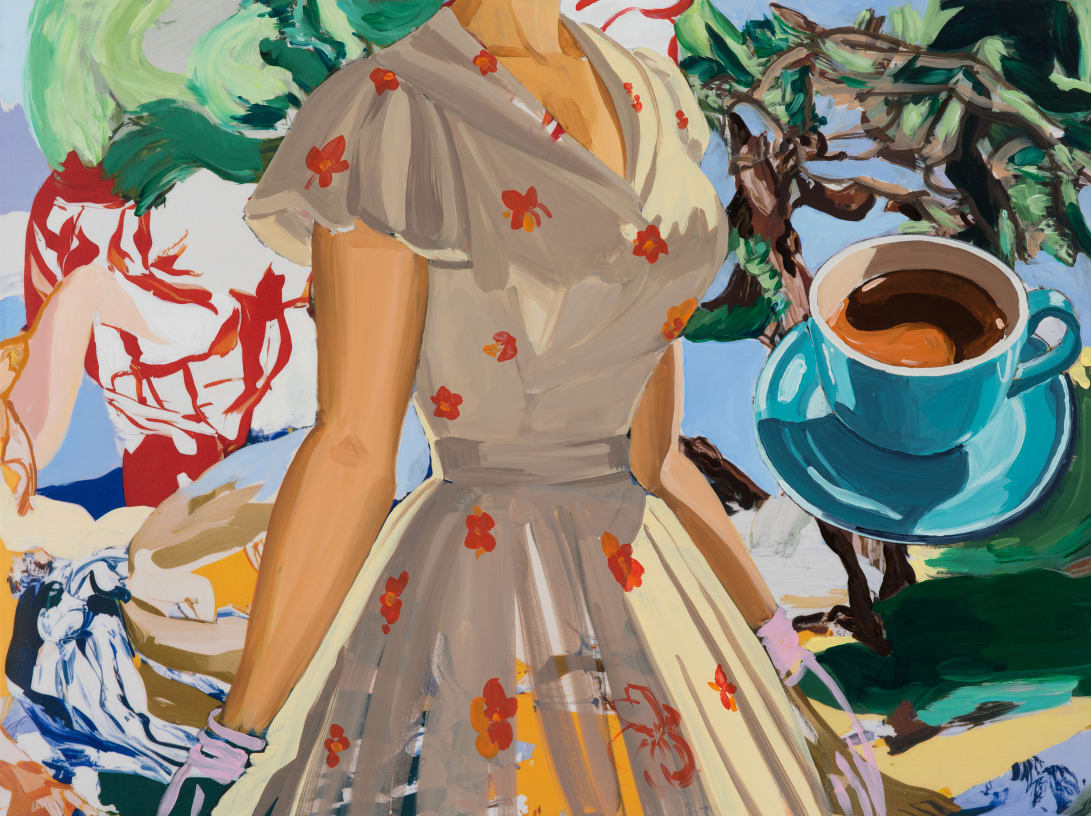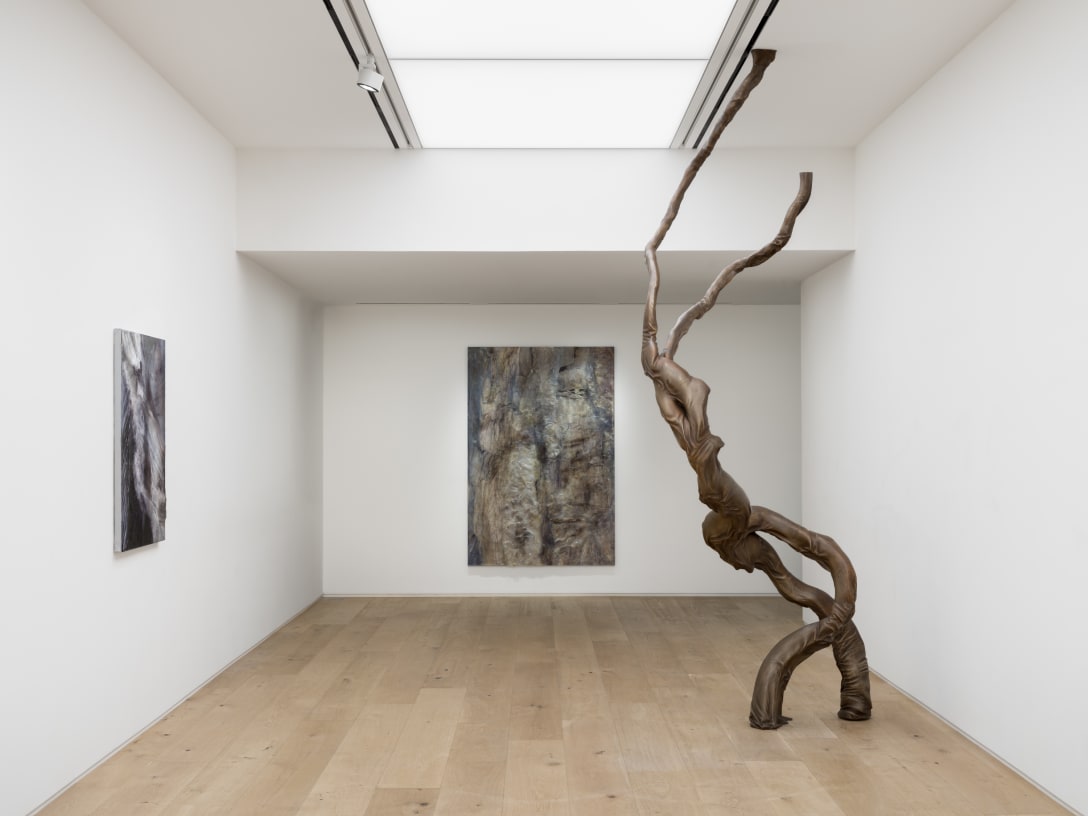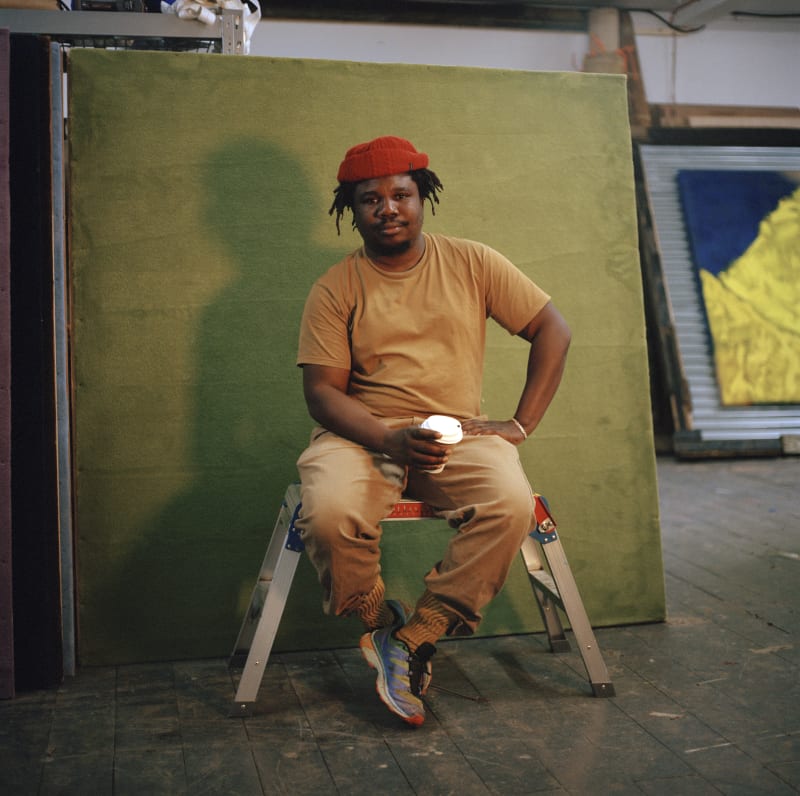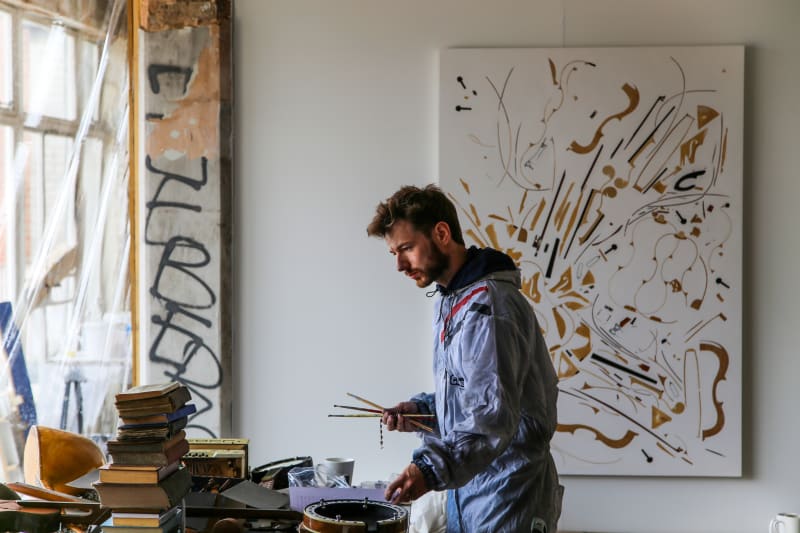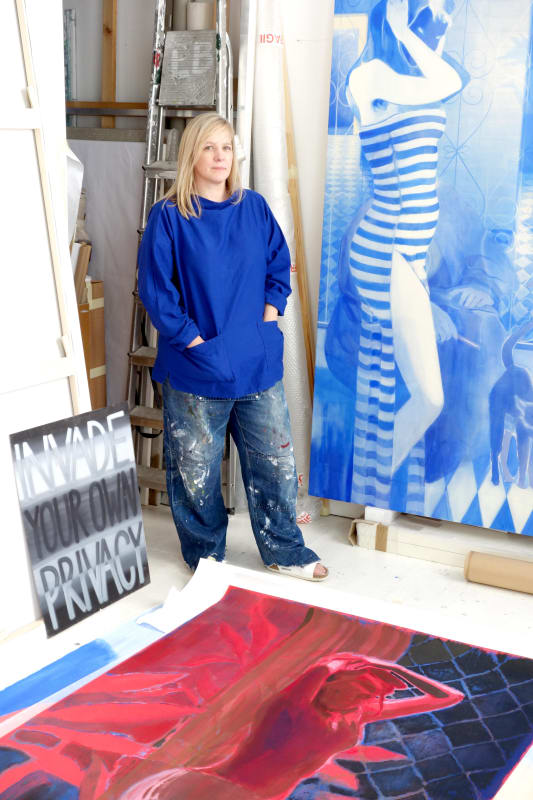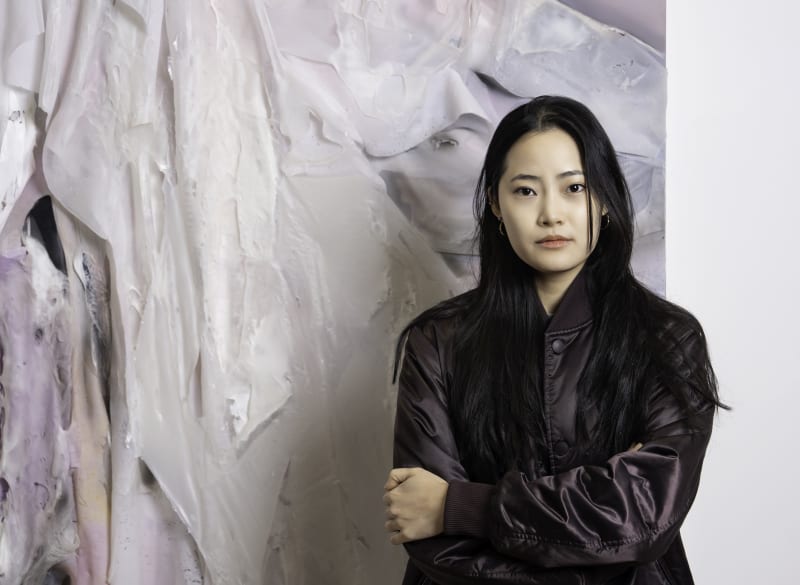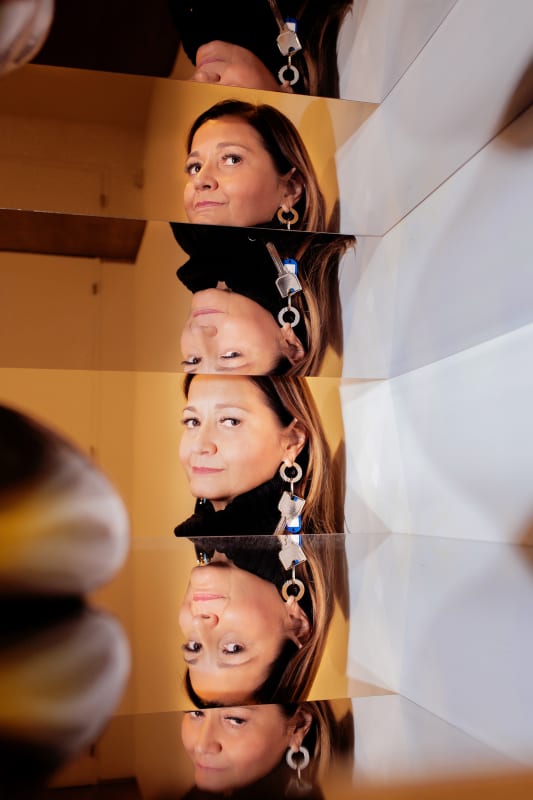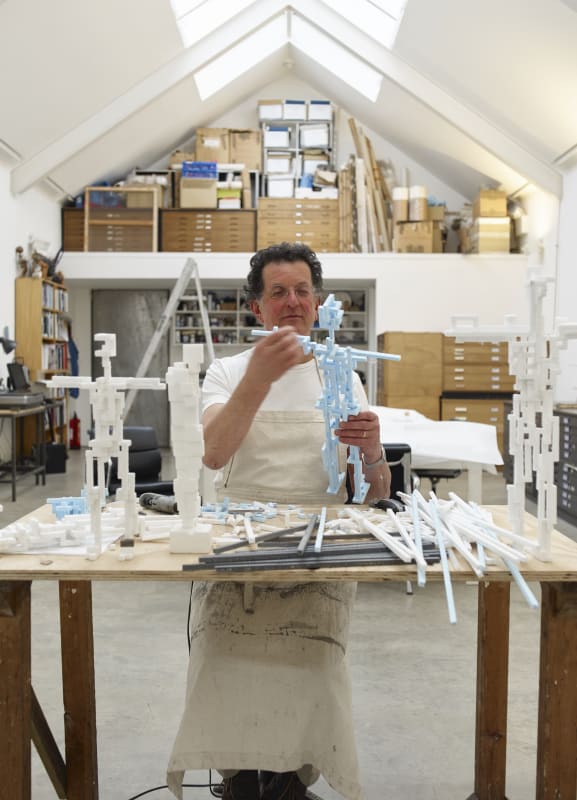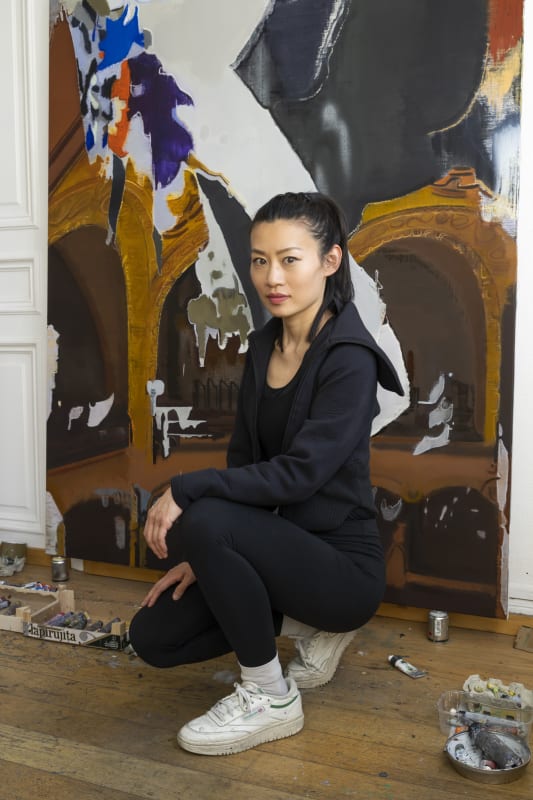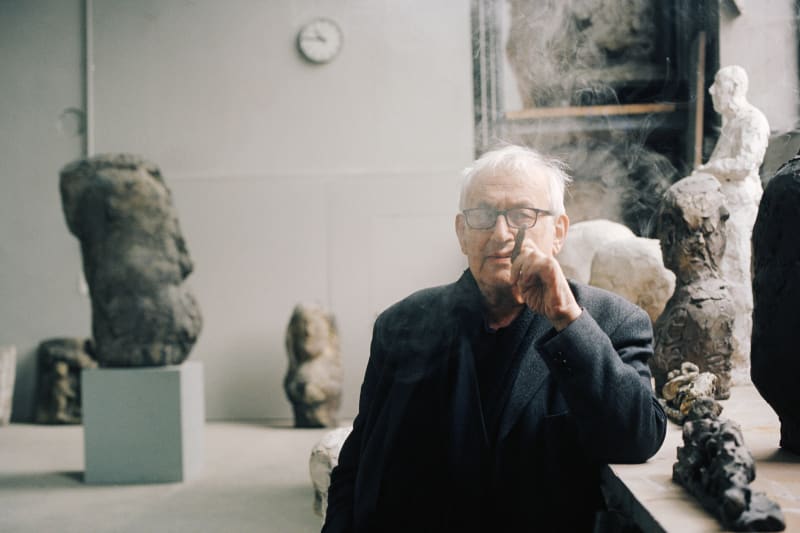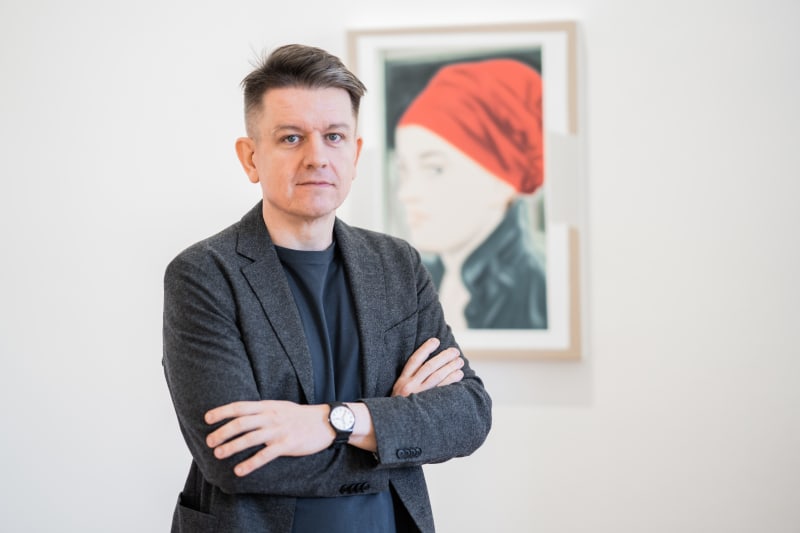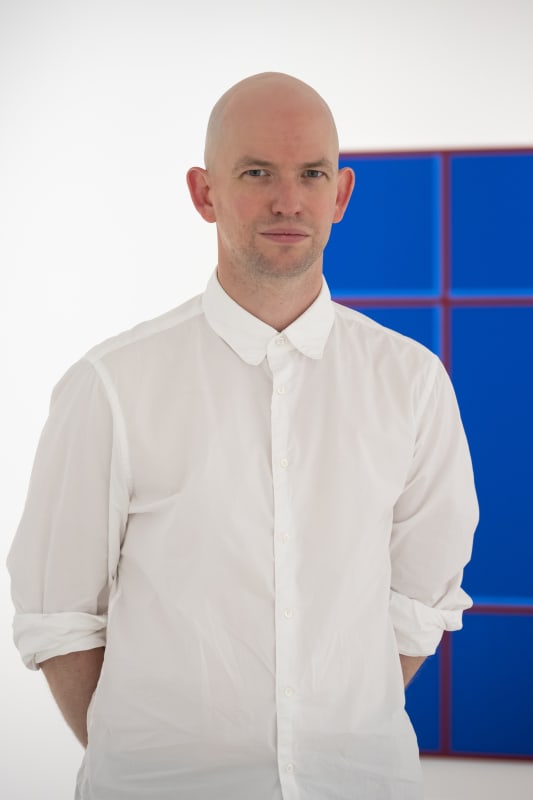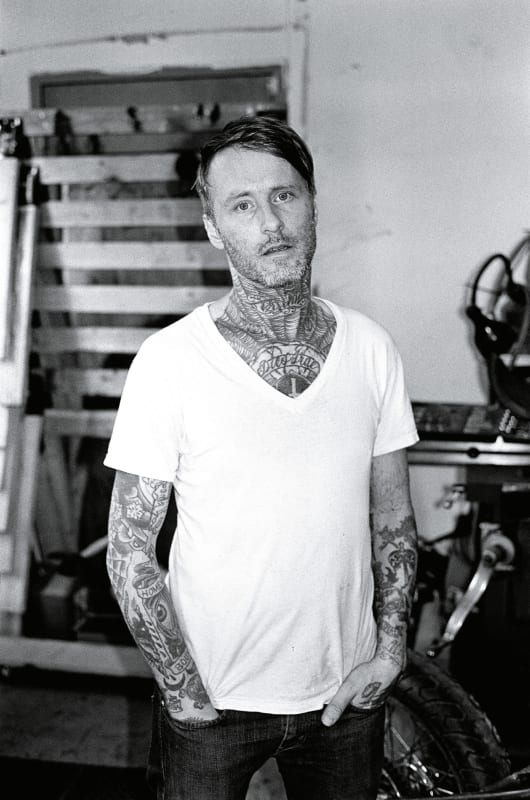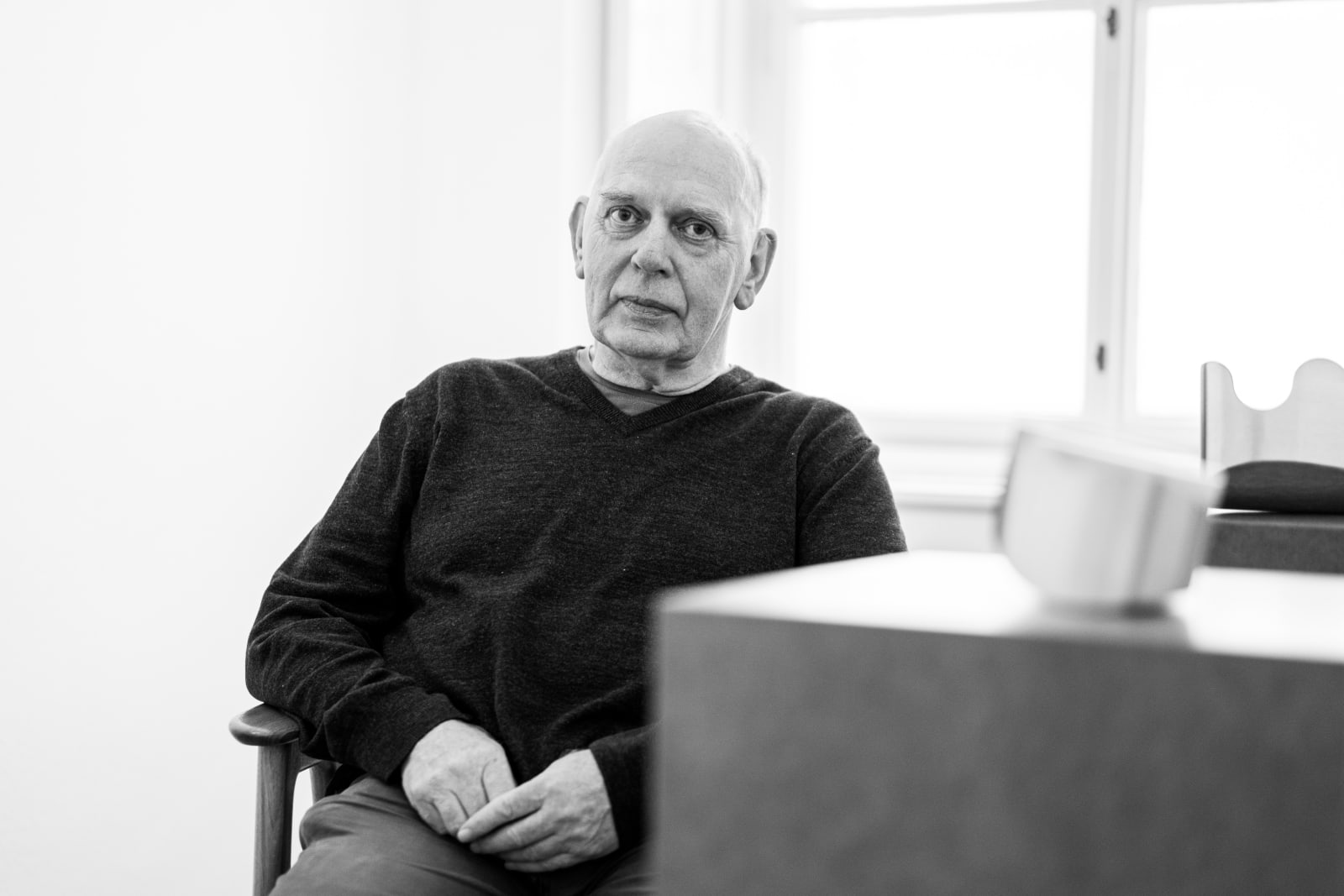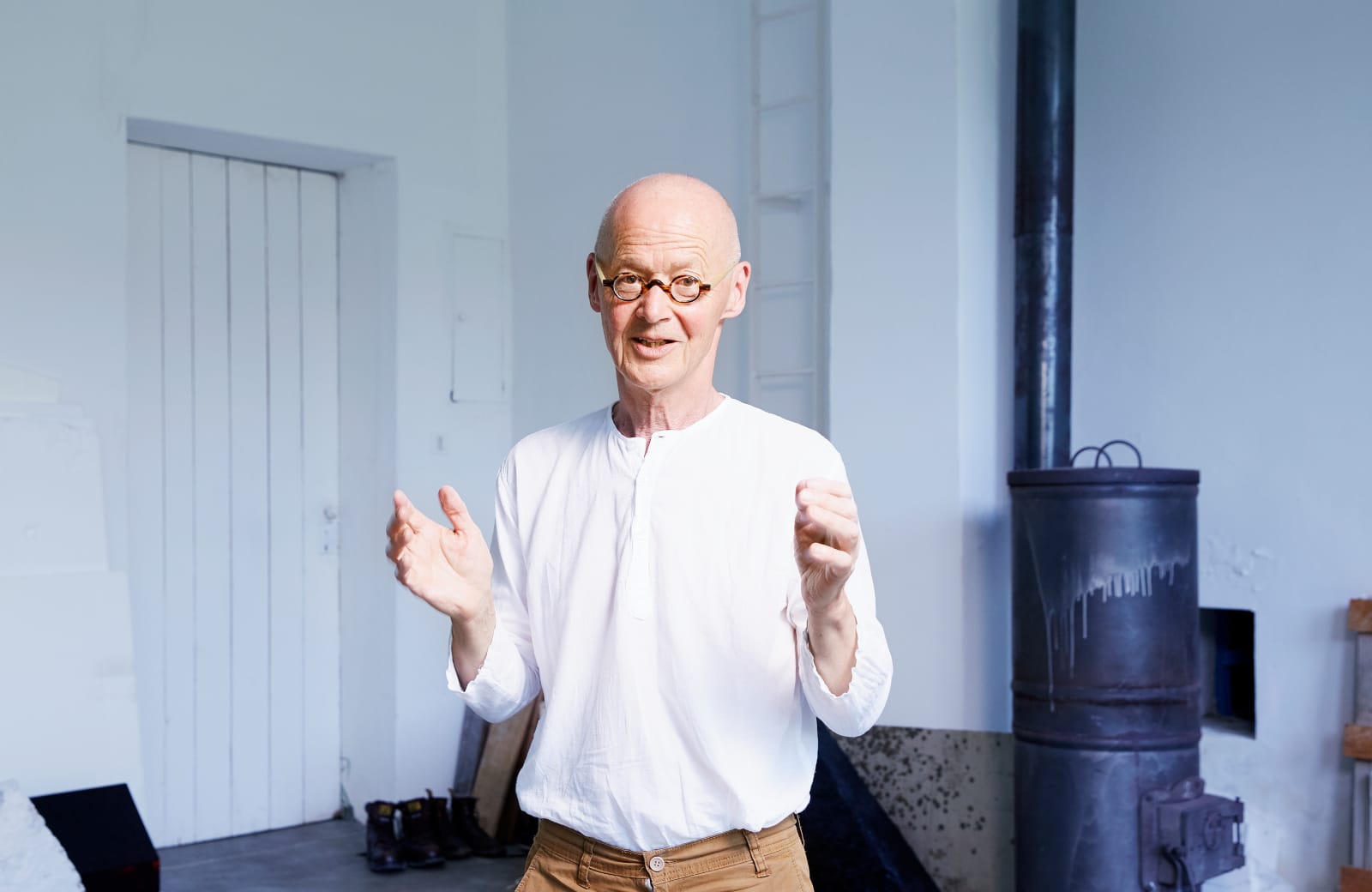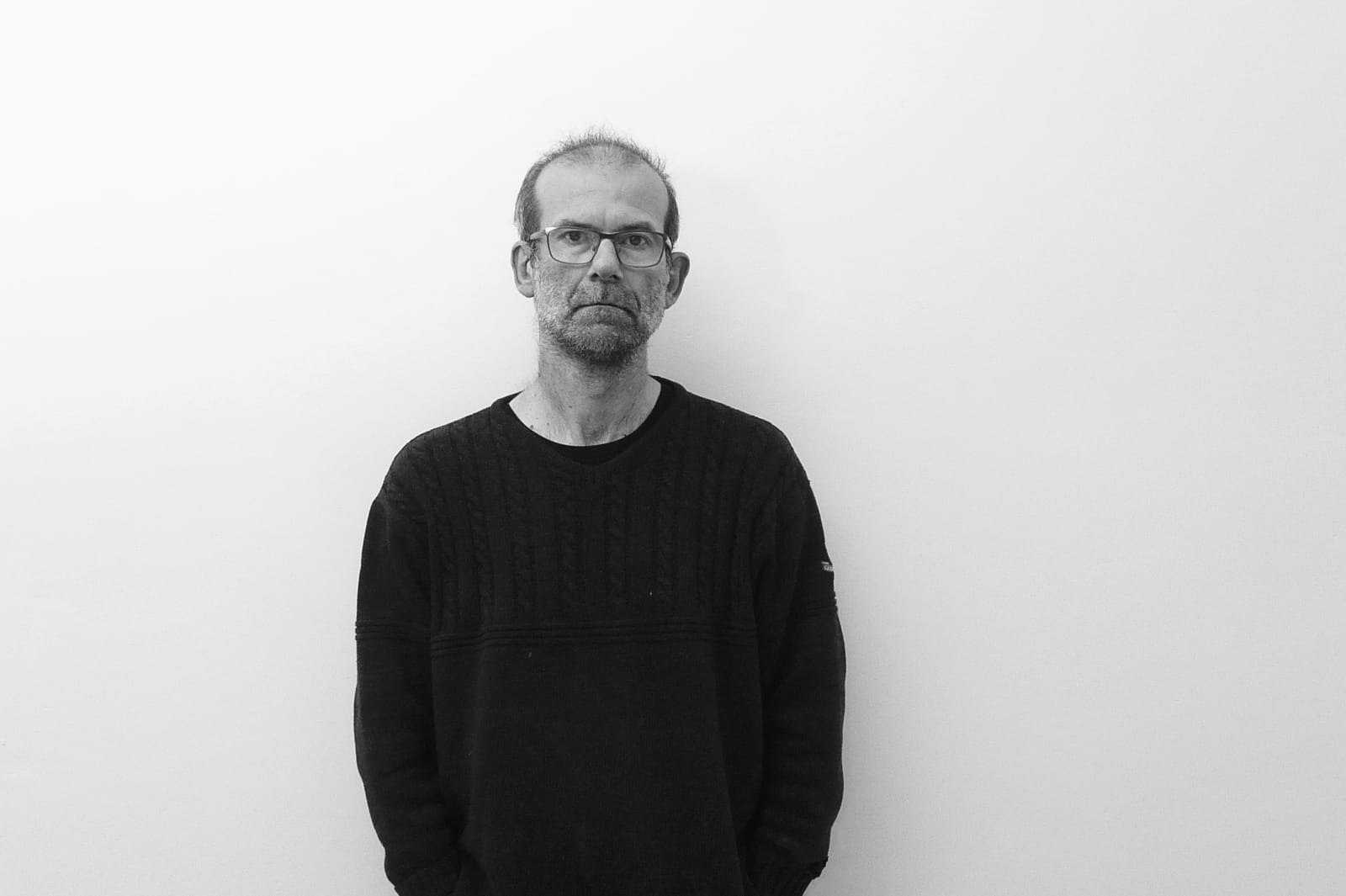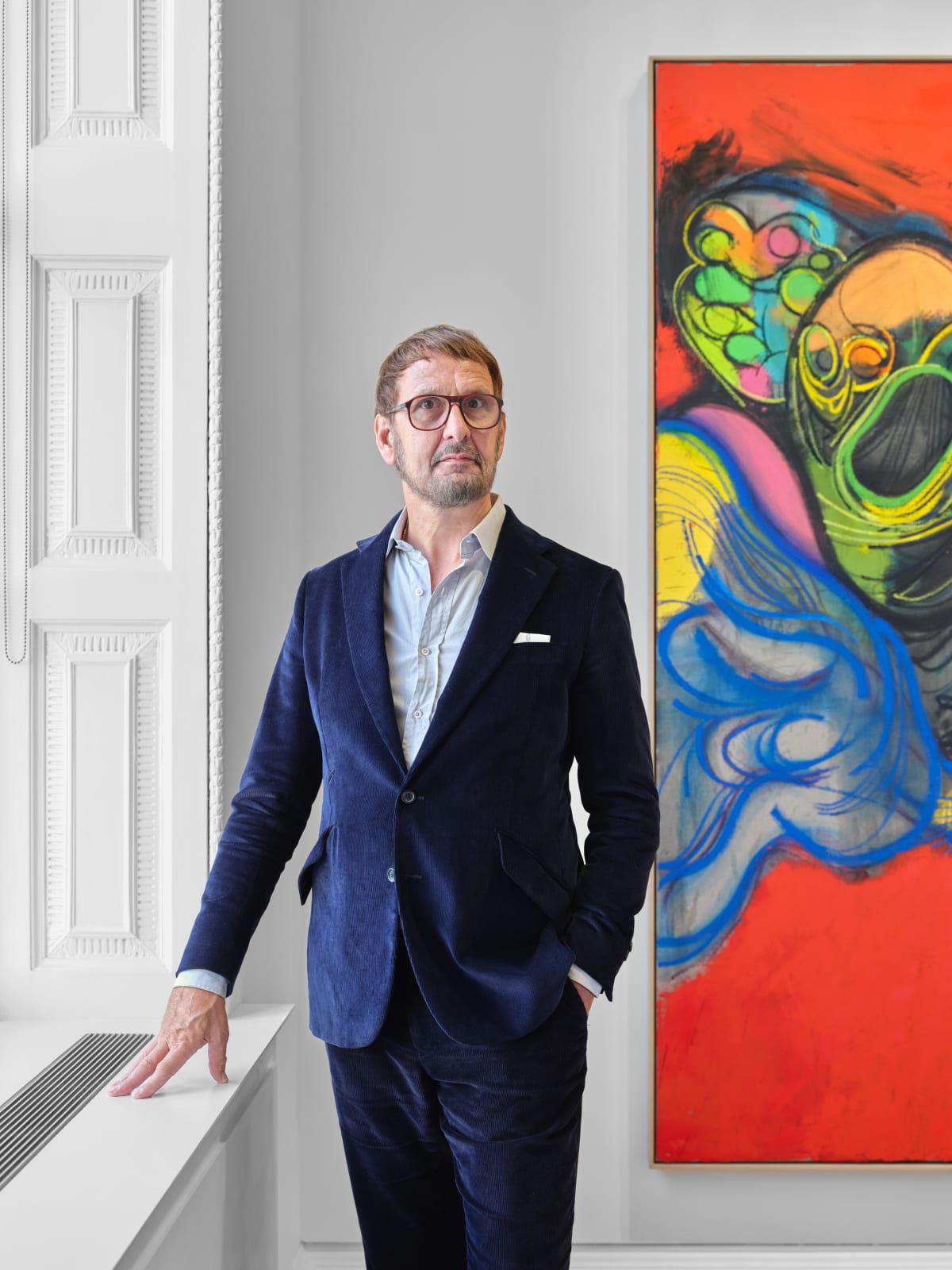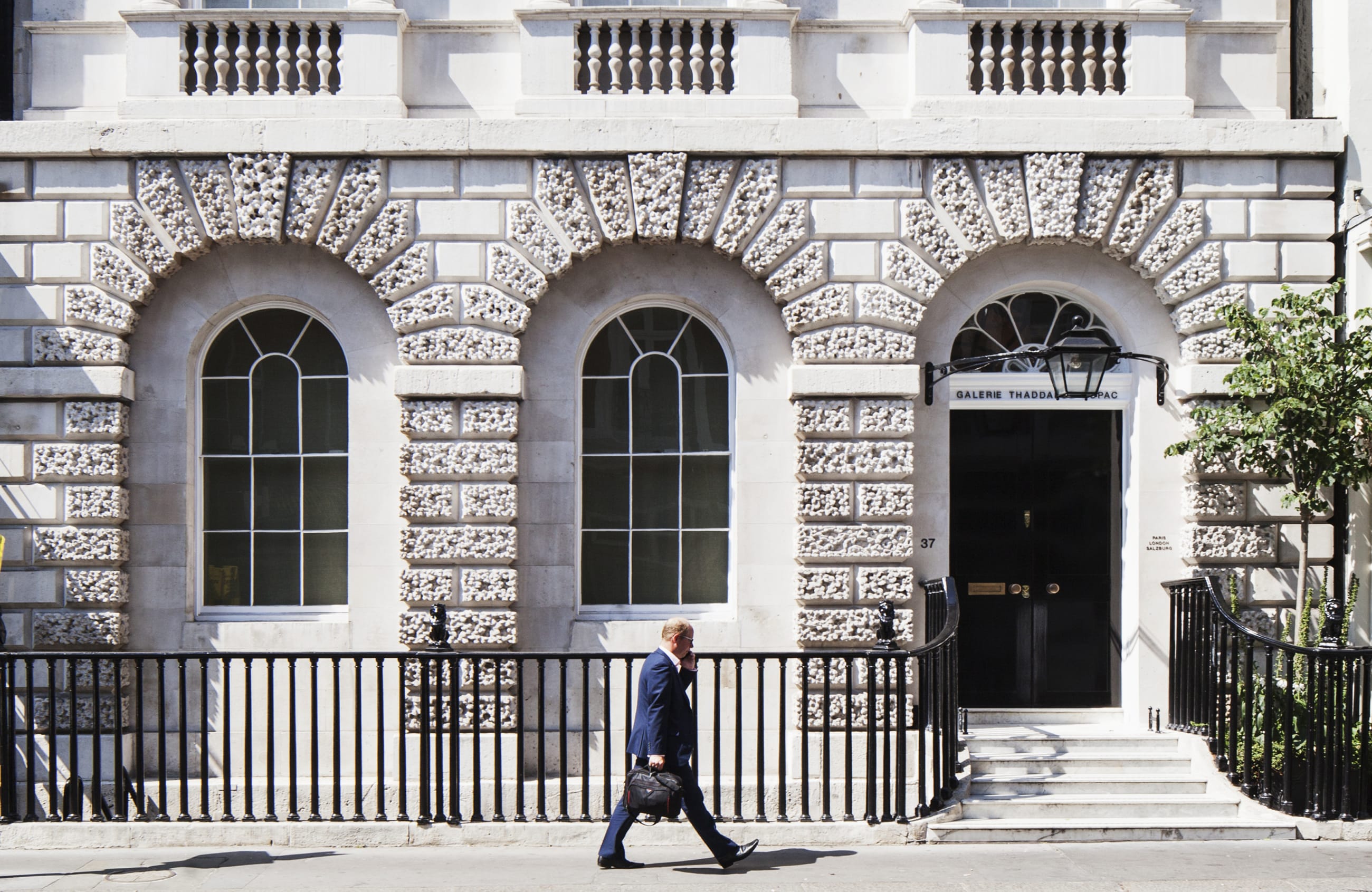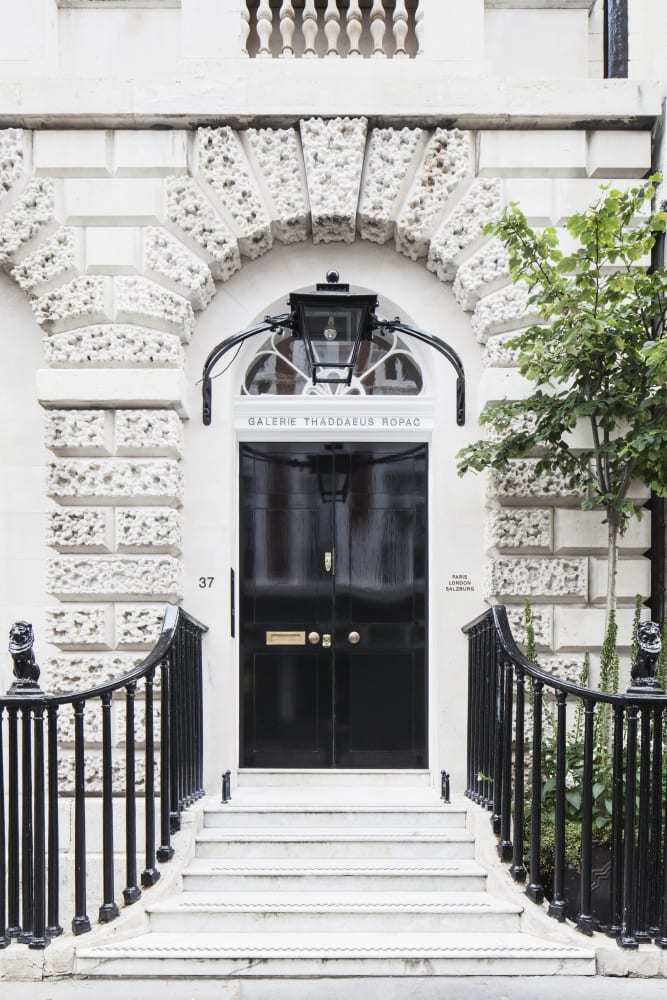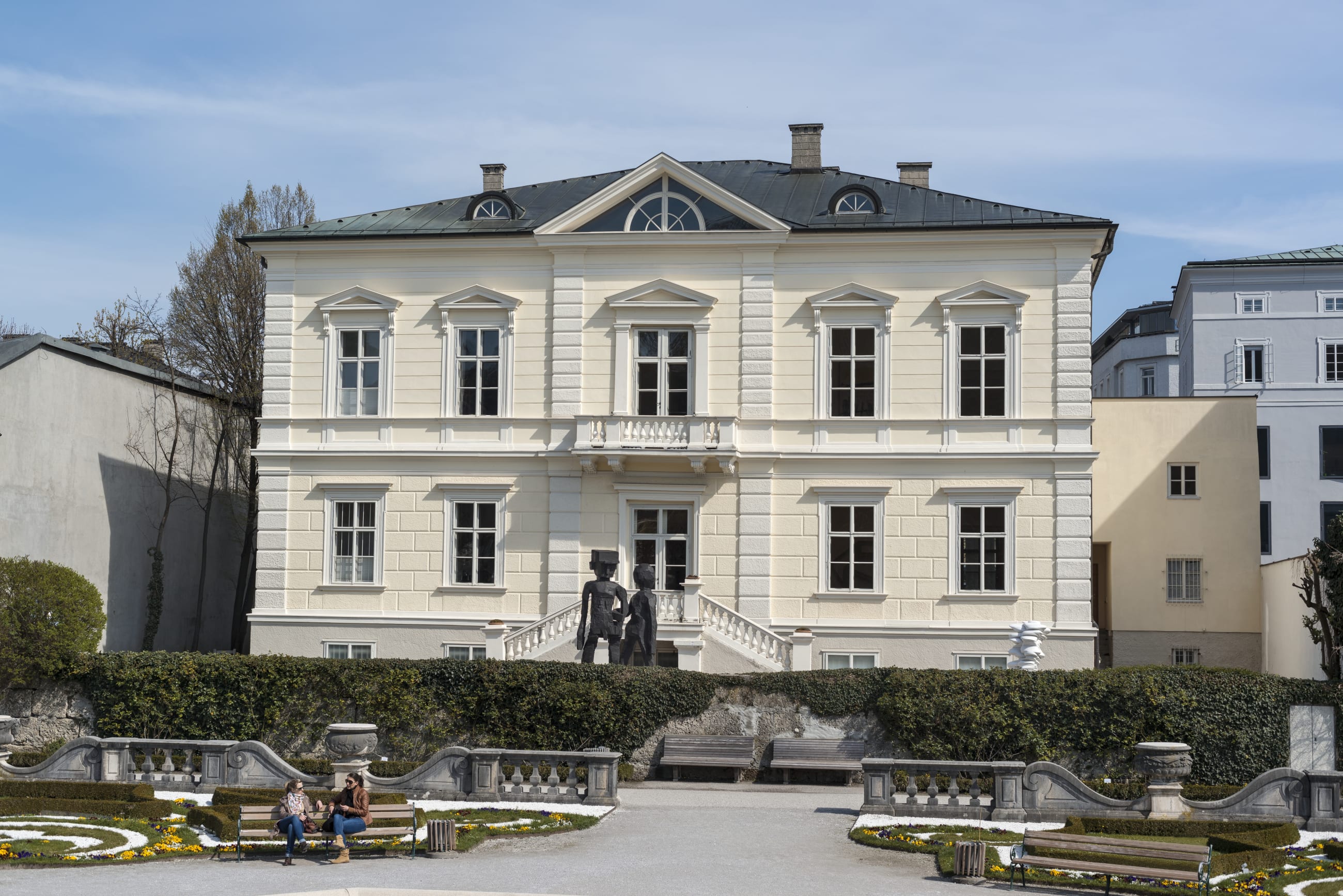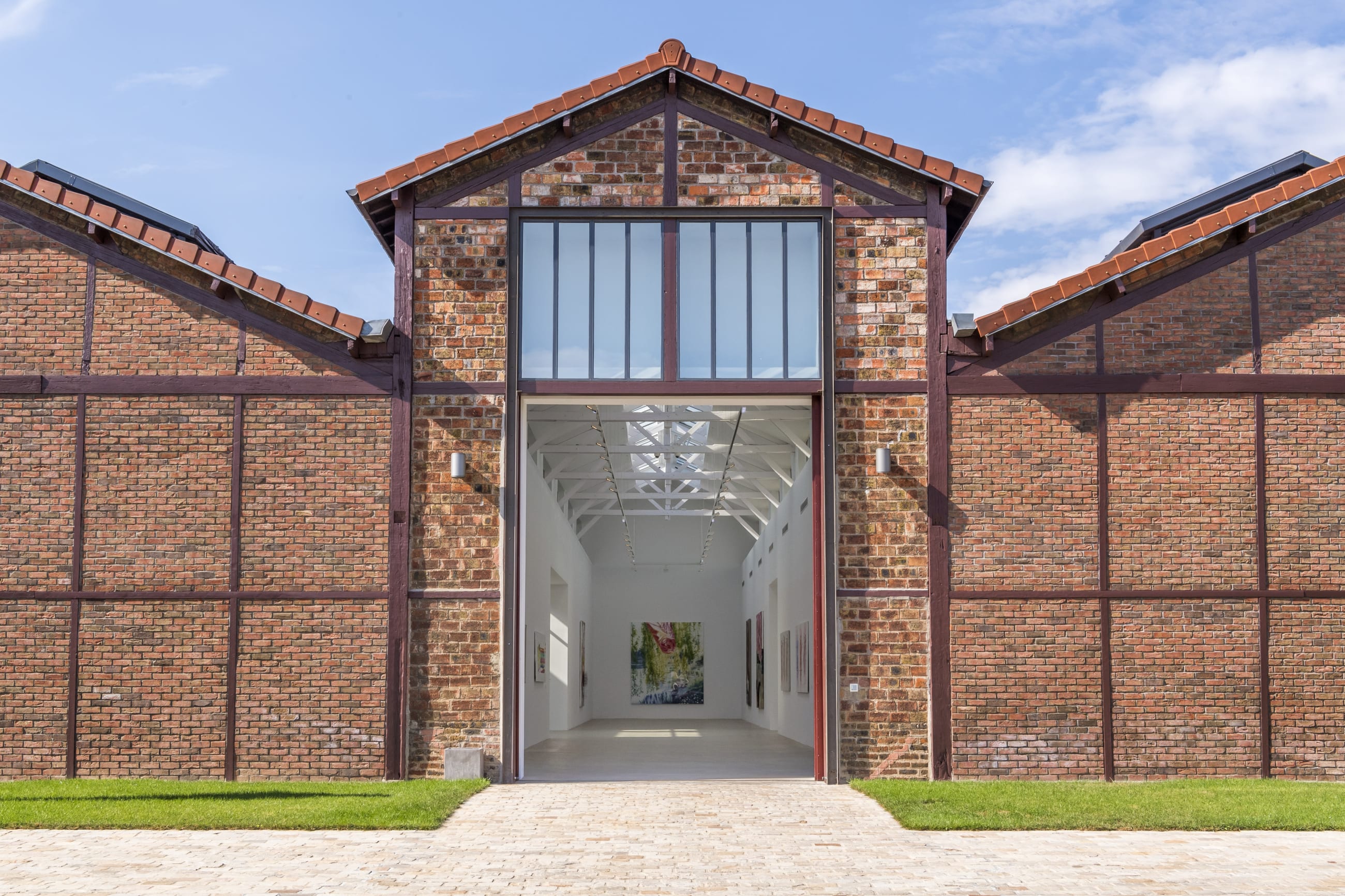I can still hear John Baldessari’s voice in my ear from 1971 talking about the portable video camera, which was then brand new. People were arguing, “Can this be art?” And John said, “It’s just another pencil in your paint box.”
— David Salle
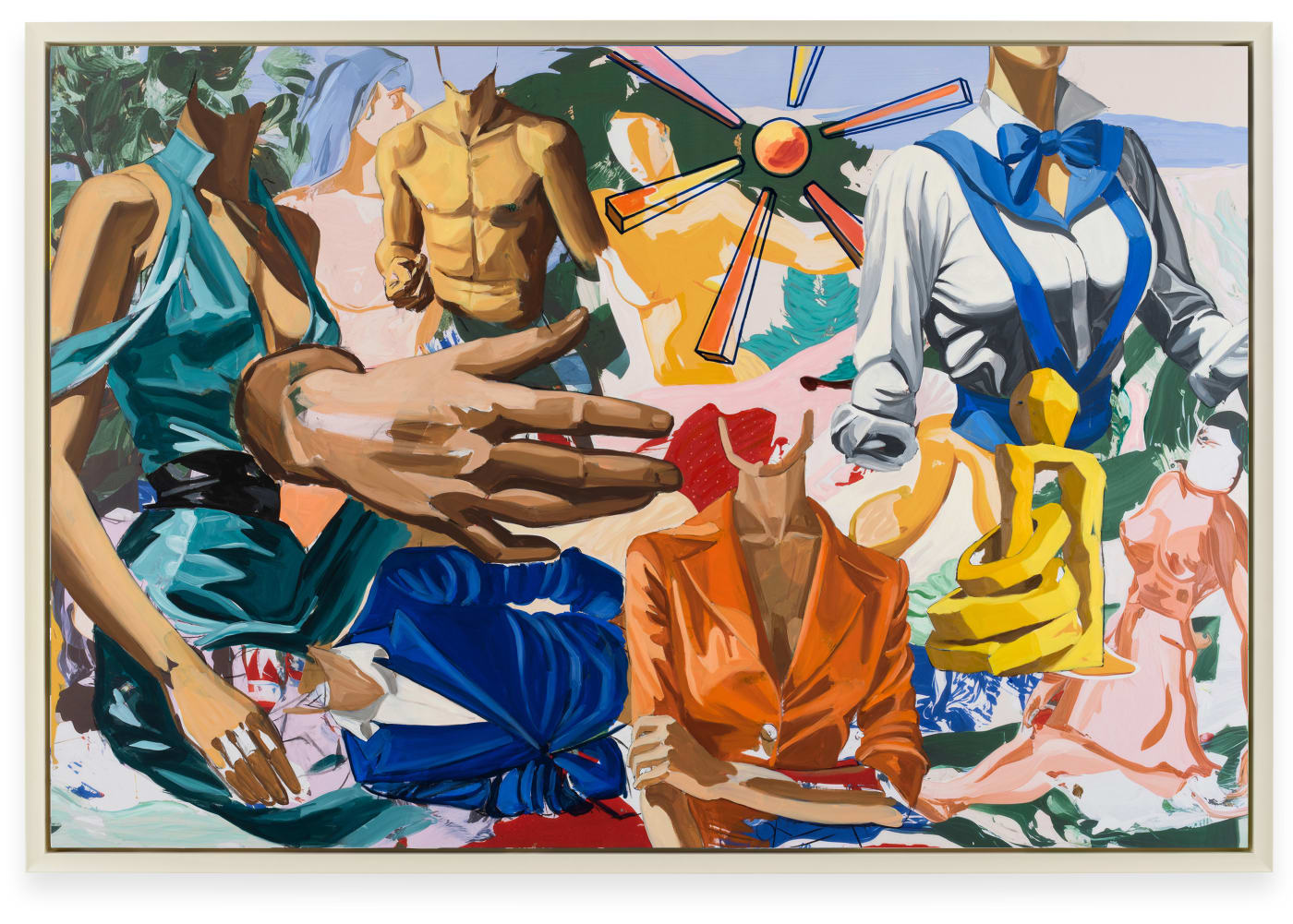
The machine – once fed a ‘specific diet’ of Salle’s Pastorals – was induced to ‘warp’ the pictorial space of the original paintings. These bold, reimagined scenes once again become backdrops onto which Salle then paints. The artist is in a dialogue with himself, taking both parts in what the curator Nancy Spector has described as ‘a duet for one’.
Suspenders, 2025
Oil, acrylic, Flashe and charcoal on archival UV print on linen
182.88 x 274.32 cm (72 x 108 in)
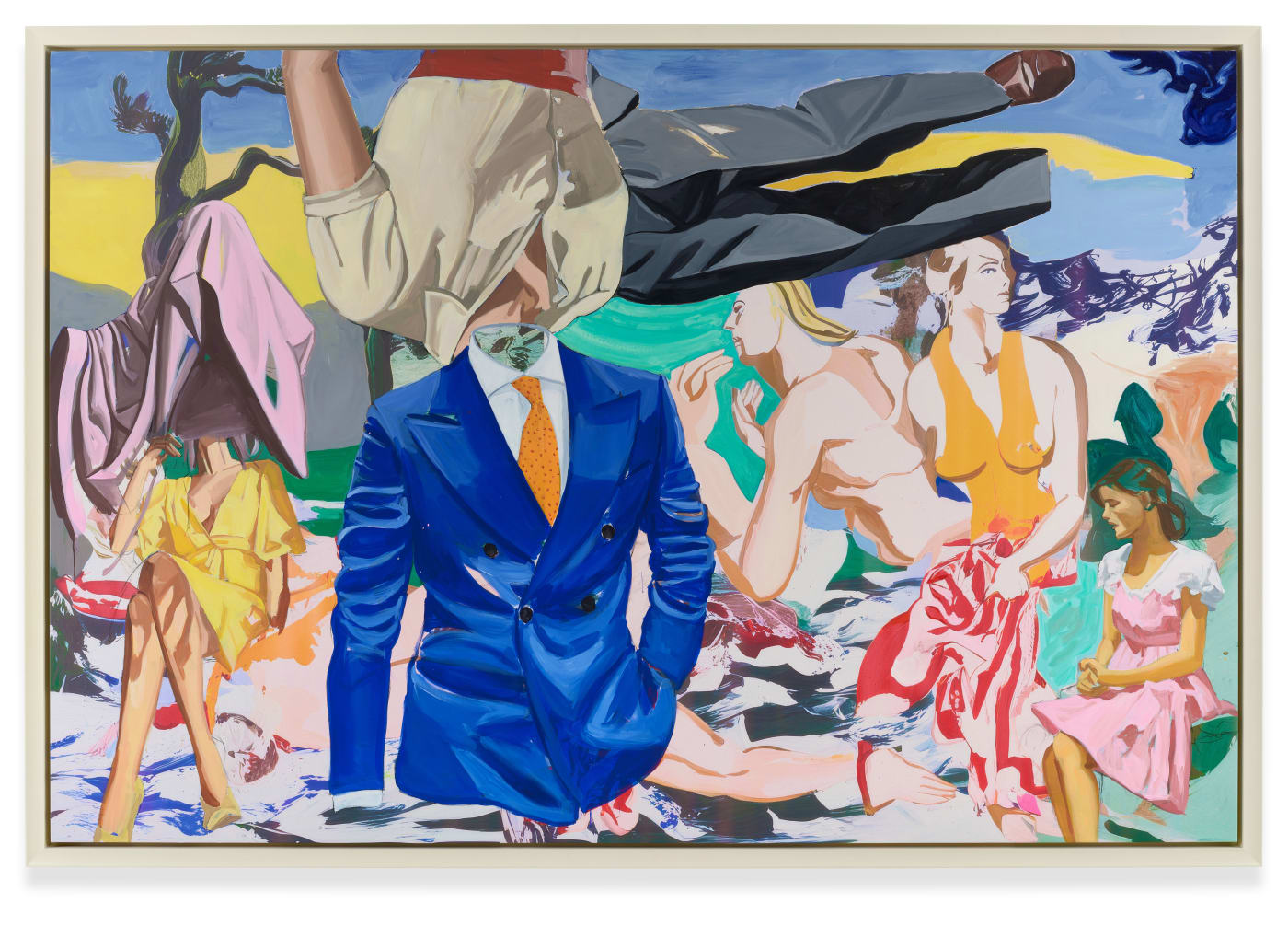
AI is a useful tool precisely because ‘it doesn't know what it is doing,’ Salle remarks. ‘It can violate the rules of depiction with no guilty conscience.’ Though patently figurative, Salle embeds his figures in the language of all-over abstraction. His paintings are highly composed; all is movement, rhythm and velocity. He creates meaning by yoking images together in unfamiliar juxtapositions; lyrical mash-ups course through the picture plane, creating the sensation of a circuitous, weightless freefall.
Big Strike, 2025
Oil, acrylic, Flashe and charcoal on archival UV print on linen
182.88 x 274.32 cm (72 x 108 in)
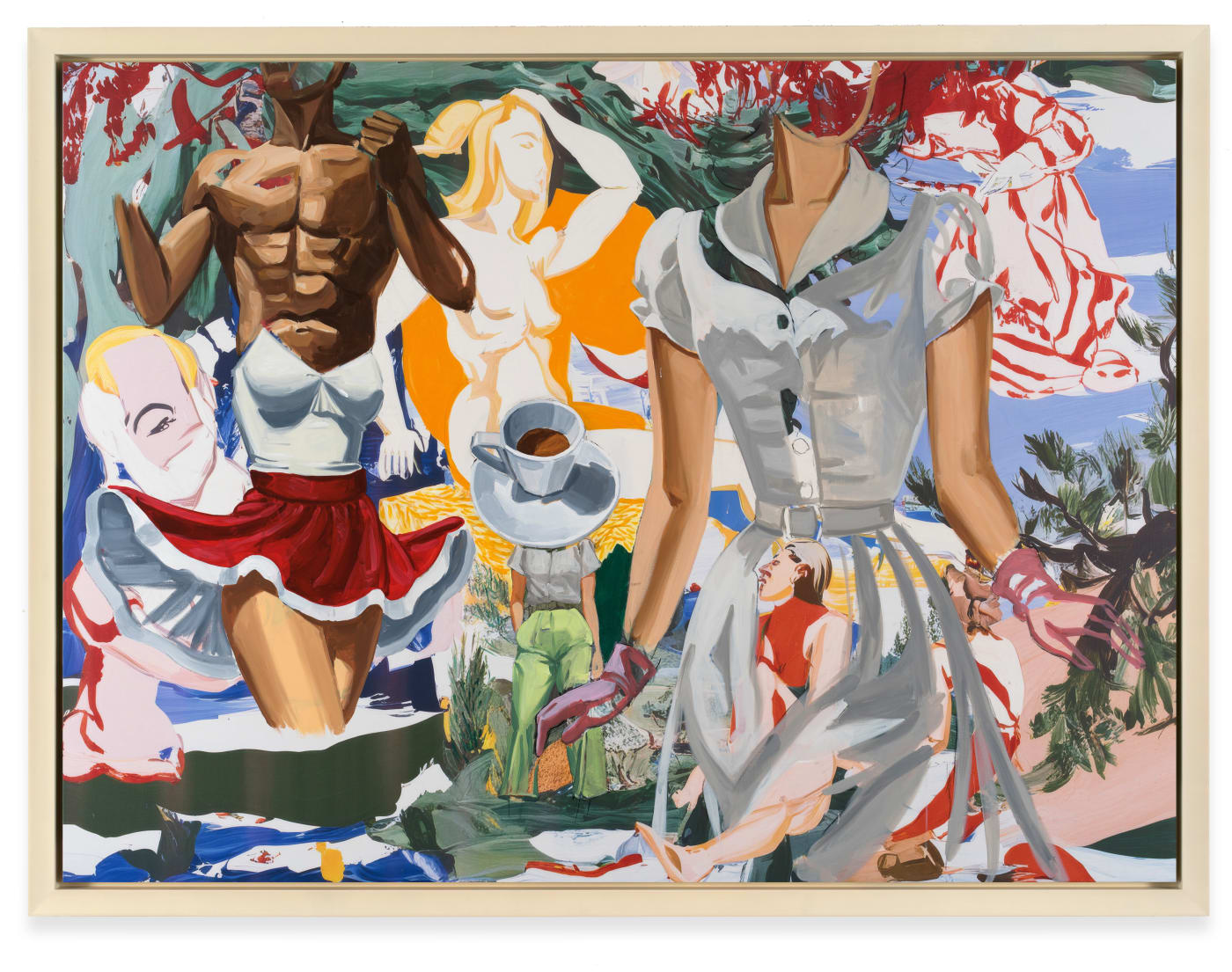
The pastoral, in literary and artistic terms, refers to a modern-day sensibility for rural life and an idealisation of rustic virtues: ‘any work about the people but not by or for them’. In the late 18th-century pastoral landscape tradition, painters edited their surroundings in the name of beauty. Emphasising the good and most pleasant parts of a scene and compressing them on one picture plane, their pictures were not necessarily faithful representations but enhanced, artificial realities.
N.P. Intrigue, 2025
Oil, acrylic, Flashe, and charcoal on archival UV print on linen
182.88 x 248.92 cm (72 x 98 in)
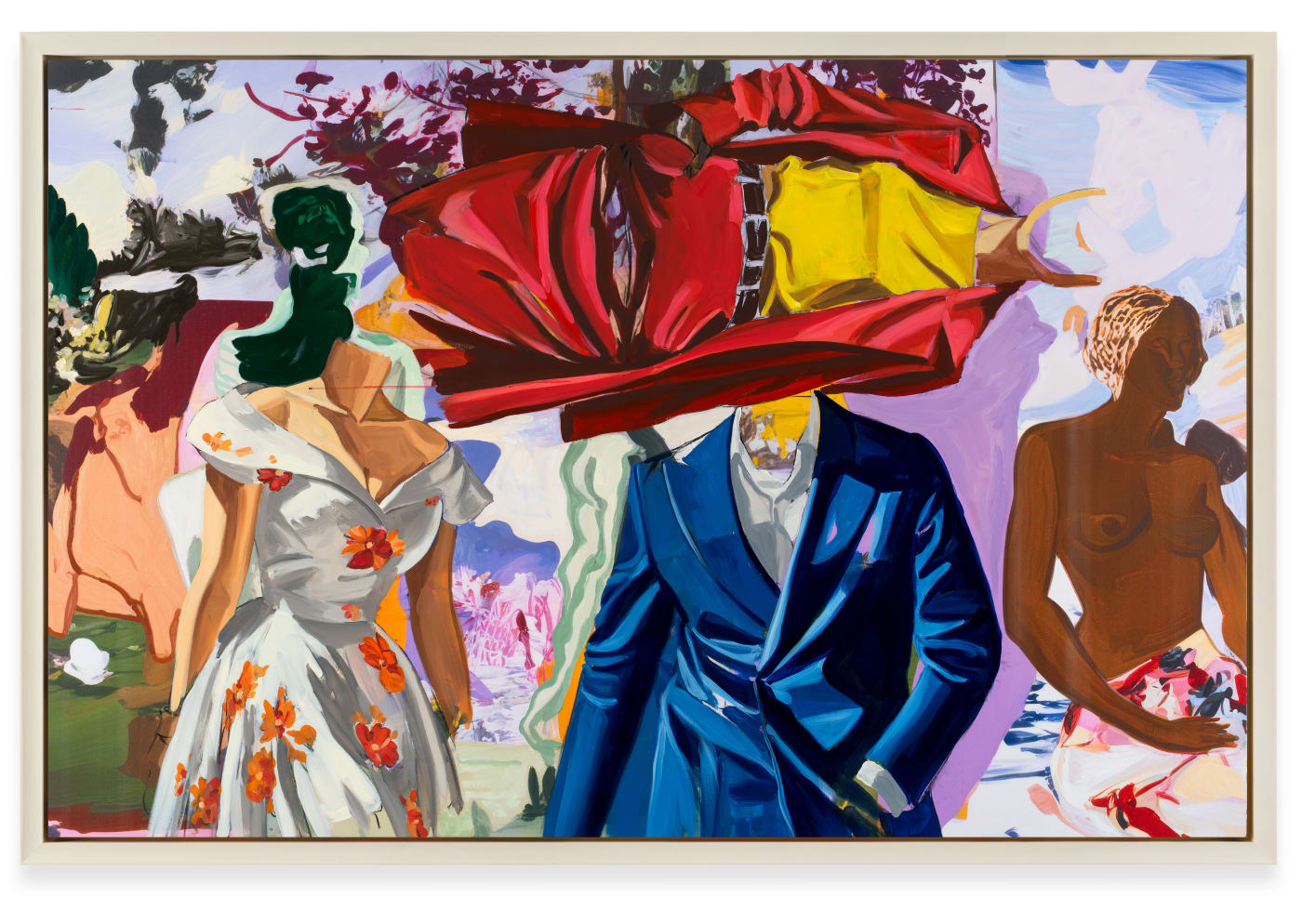
The Red Suit, 2025
Oil, acrylic, Flashe, and charcoal on archival UV print on linen
152.4 x 228.6 cm (60 x 92 in)
I’ve always had a desire to scramble the visual world into a vortex, to kind of de-solidify painted reality into something that has the fluidity and velocity of a great abstract painting.
— David Salle
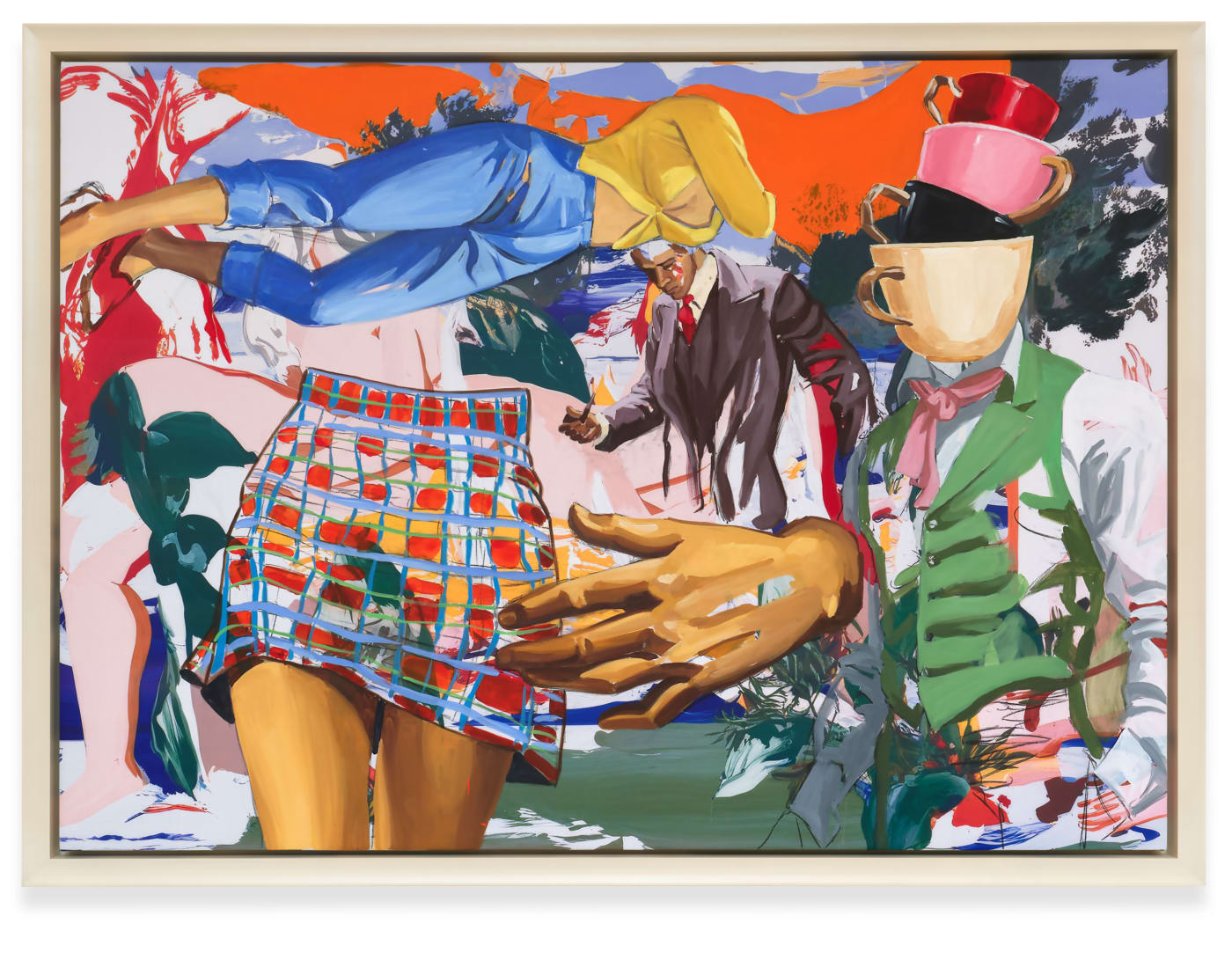
Salle’s original Pastorals were based on a 19th-century opera screen. The scene contained, and allowed Salle to riff on, all the classical elements of a pastoral drama: the double plot, the courtship, the heightened contrast between natural and preternatural worlds and the passages of romantic verse clipped with witty prose interludes. Now, 25 years later, the Pastorals are scrambled into backdrops of their own; theatres in which Salle unleashes his painterly improvisation.
The Green Vest, 2025
Oil, acrylic, Flashe and charcoal on archival UV print on linen
127 x 177.8 cm (50 x 70 in)
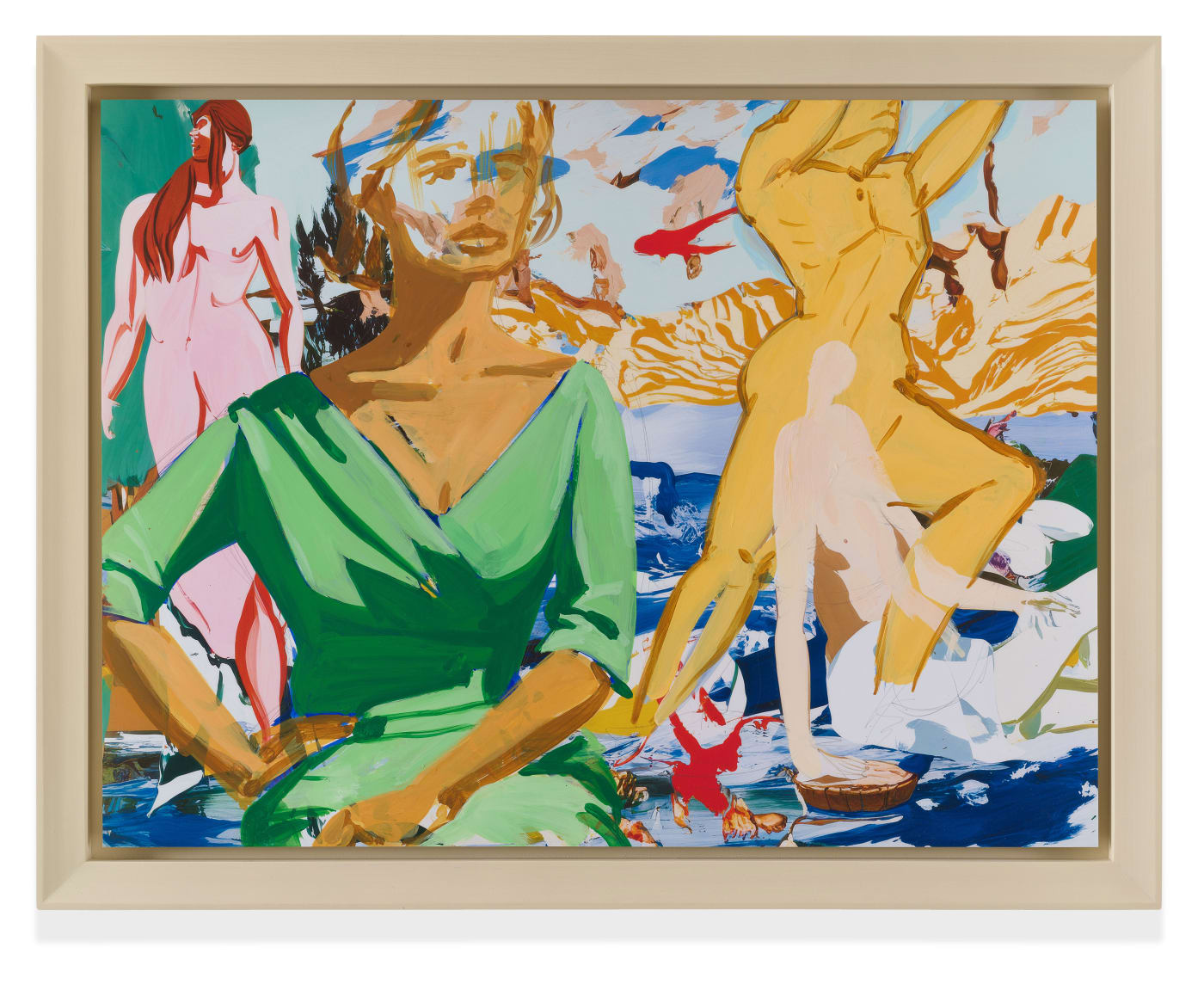
Untitled, 2025
Flashe, acrylic and pencil on paper mounted on aluminium
49.53 x 66.04 cm (19.5 x 26 in)
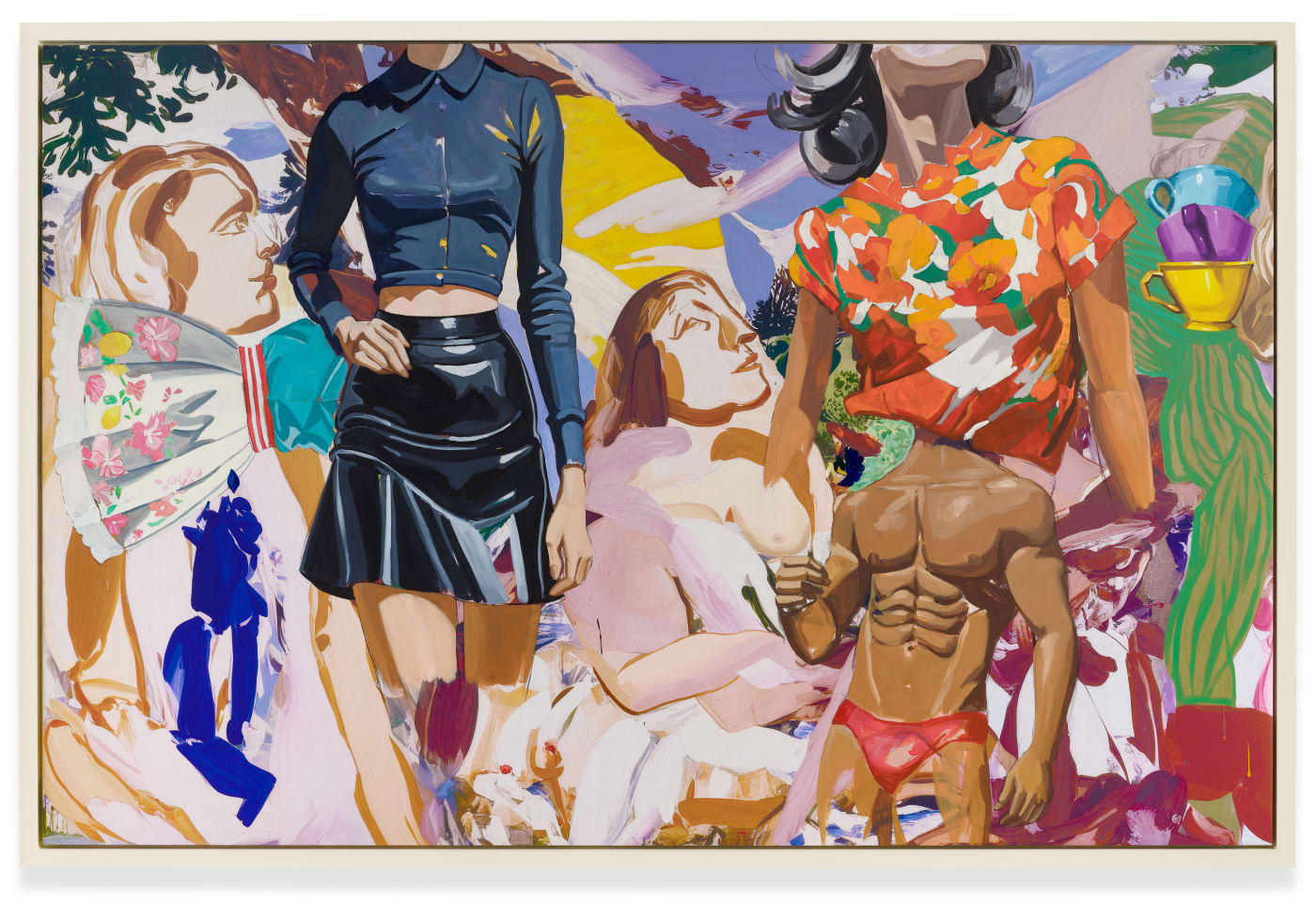
The works in the exhibition teem with a new plasticity and connectivity. Narrative threads unspool between a cast of mostly headless models, upside-down torsos and precariously stacked teacups, all adrift in the bucolic scramble of Salle's original paintings. Shapes cohere, only to dissolve back into the glitching, painterly continuum from which they emerged, and our viral visual world is reclaimed for the space of painting.
Vamp, 2025
Oil, acrylic, Flashe and charcoal on archival UV print on linen
198.12 x 304.8 cm (78 x 120 in)
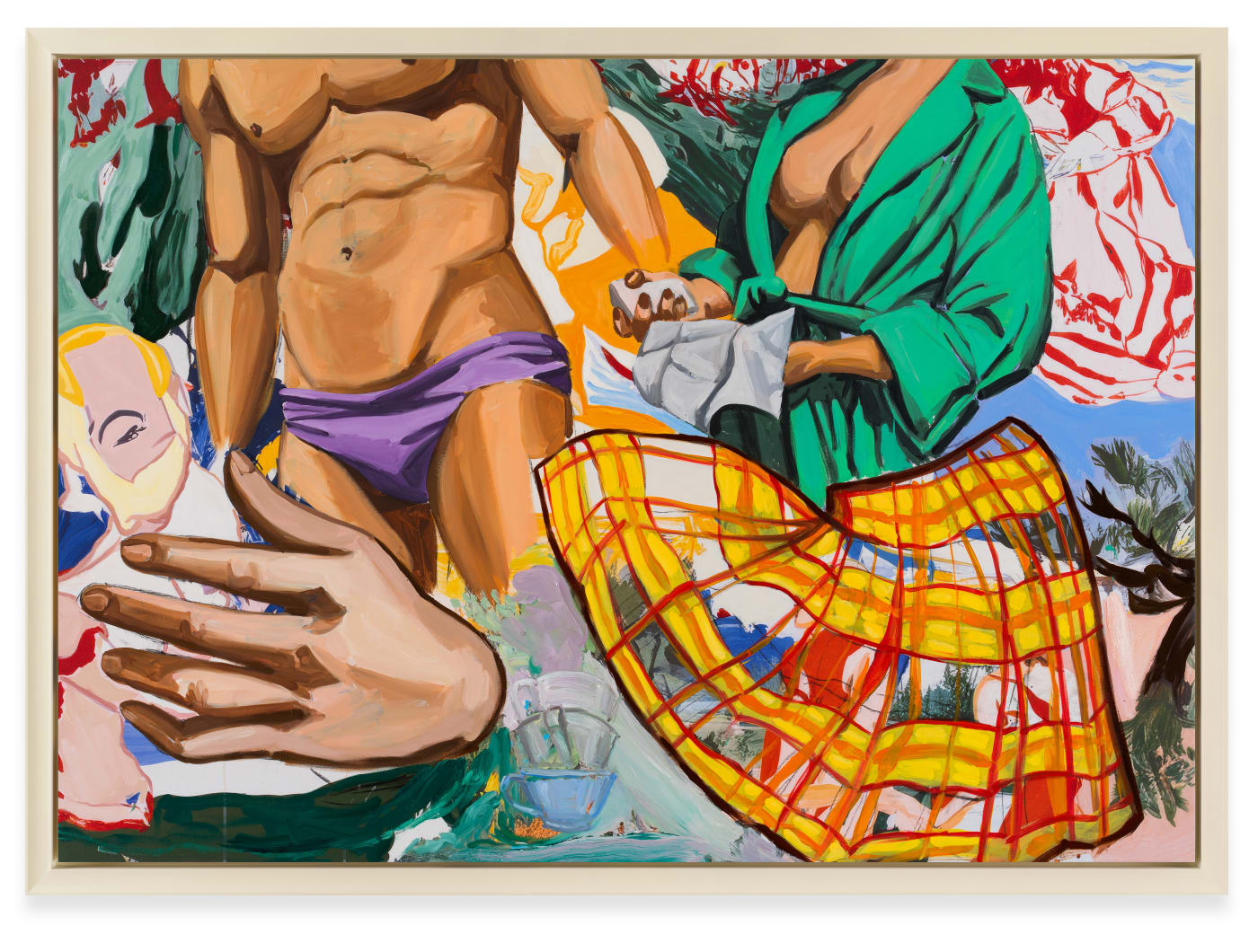
Washing, 2025
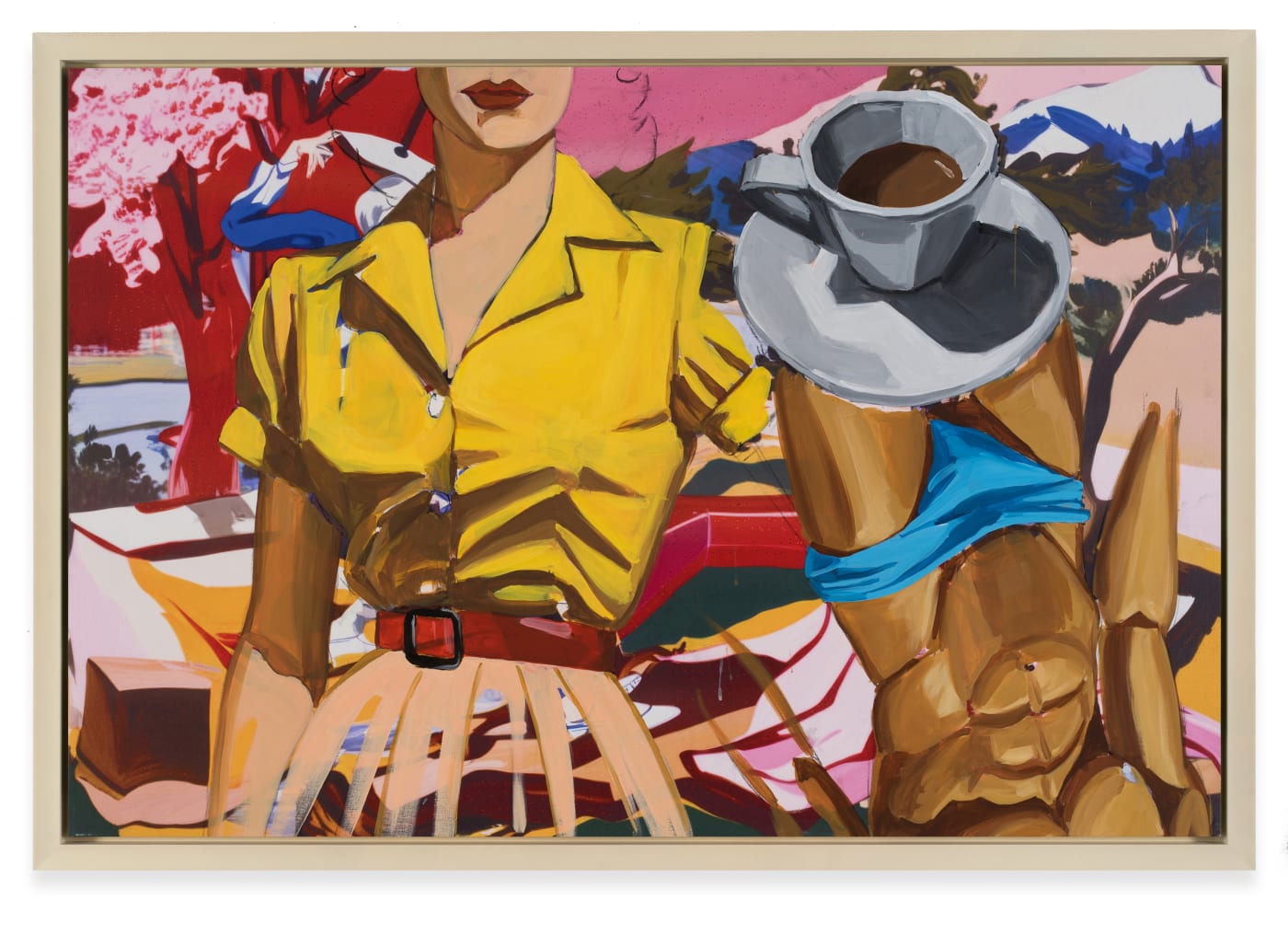
Blue Trunks, 2025
News & Events
